
How To SEO Audit A Website. Bonus Checklist Included!
With so many ranking factors at play in the SERPs, it can be difficult to keep everything in check.
Performing an SEO audit is a good way to make sure you’re on the right path and that you aren’t creating any extra hurdles for yourself.
You’re running in the same race as your competitors and trying to get to the same place. They might be able to run faster, but if you only have to jump over half as many hurdles as they do, that could be the difference between winning and losing.

It also gives you an opportunity to apply new knowledge and techniques to give life to older content that has been left behind.
We’ve seen some SEO audit guides that spend more time talking about why it’s important to do an audit than they spend telling you how to do an SEO audit.
Let’s assume that you already know ‘why’ this is an important thing to do, and rather than droning on for 1500 words about that, we’ll jump immediately into ‘how’...
Tools/Services mentioned in this guide:
- Search Console
- Pingdom Website Speed Test
- GTmetrix
- PageSpeed Insights
- CloudFlare
- Let’s Encrypt
- Really Simple SSL
- Kraken.io
- Screaming Frog /Xenu Link Sleuth
- Linode /AWS Lightsail /DigitalOcean
- Ahrefs
- SEMrush
- SERPWoo
Initial Steps to Take (Search Console, Indexation, Sitemap, Manual Actions...)
Before we really start to dig in, let’s make sure we’ve got the basics covered. If you already have Search Console setup (or don’t want to use it), know your site is indexed correctly, you’ve got a sitemap, and you know you don’t have any manual actions taken against you for spam, you can skip ahead to the next section which is called “Page Speed & Load Times”.
Using Google’s Search Console
First things first, you’ll want tosign-in to your Google account here and add your website as a new property if you don’t have Search Console yet.

From here, you can check if there are any manual actions against your domain, perhaps from a failed link building attempt in the past, or even a previous owner of the domain name.
Search Console will give you an overview of how many pages are indexed and any URL errors your site may be suffering from, along with crawl errors.
You can submit a Sitemap to google through the Search Console, and you’ll see how many of your pages and images are being recognized by Google.
You’ll also see if there are any issues that need to be addressed...
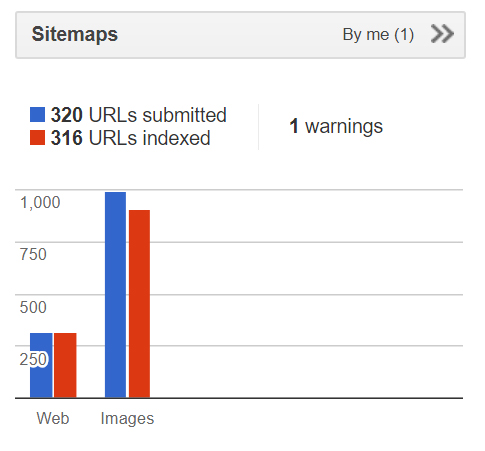
In the screenshot above, you’ll notice there’s one warning, and here’s what the problem was: “Some URLs listed in this Sitemap have a high response time. This may indicate a problem with your server or with the content of the page.”
What If Your Site Isn’t Indexed?
If your site isn’t being indexed with Google, that is a huge problem. They aren’t the only search engine, but they’re the biggest and most important right now.
Not being indexed could be due to one of the following reasons:
- Your site is too new, and Google just hasn’t picked it up yet.
- Your robots.txt file might be telling search engines not to index your site.
- Your site may have been penalized and removed from the SERPs. If your site has been blocked from Google due to a violation of their quality guidelines, you may be able to make the necessary changes to become indexed again. Search Console should notify of you any major actions taken against your site.
- The following WordPress setting to discourage search engine visibility might have been enabled, preventing your site from being indexed correctly by modifying your robots.txt file.
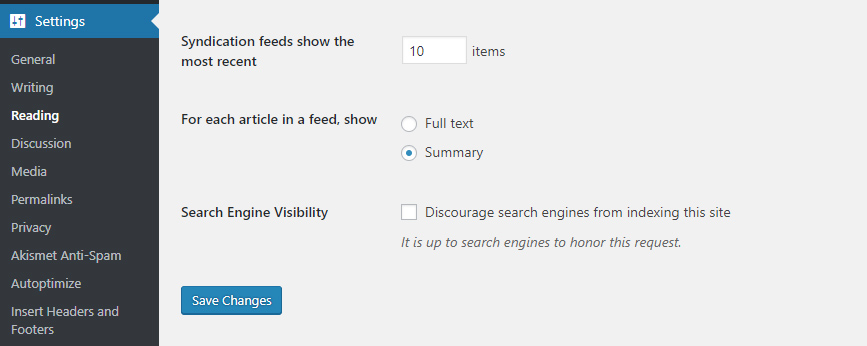
Other Indexation Issues
Just because your site is being indexed, that doesn’t mean it’s being indexed correctly. It’s helpful to do a quick search using the following Google search operator (Just type this into a Google search, replacing the words “YourDomain.com” with your actual URL.)
Site:YourDomain.com
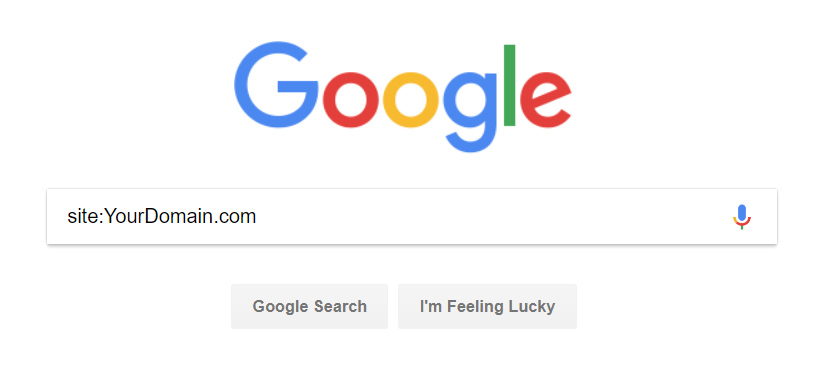
If you see a ton of search results for random spammy sounding pages, your site has likely been hacked. It will be a pain to find and remove all of those extra pages, but the good news is that once they’re gone, you can resubmit your sitemap again and in time Google will get their search results straightened out. Sorting this out will likely have a big impact on your site’s search performance, too.
Note: Search Console is a Google service so webmasters who are taking a spammier approach will often try to avoid leaving footprints with Google as much as they can, but for your business sites this is a helpful tool that can reveal a lot - straight from the horse’s mouth.
Page Speed and Load Times
This is a topic that has been discussed a lot in recent years and is important for a number of reasons that intertwine together. Firstly, it’s usually an area where you can make some easy gains if your website hasn’t been optimized for speed at all yet. A faster loading site will also improve the experience for your visitors. If Google is sending visitors to your site, but too many of them are smashing the back button because it takes too long for your page to load, that sends a really bad signal.

Not only are potential customers or fans leaving your site, but in the process of doing so they’re also telling Google that they aren’t finding what they were looking for.
There are countless things you can do to improve your page speed, but we’re going to focus on a few of the easier wins for now.
There’s a point of diminishing returns as well, where the amount of effort that it takes to shave off extra bytes could likely be much better spent elsewhere. Exactly where that point rests is a decision you’ll have to make as you go.
1. Server & Browser Caching
There are several plugins that can help you with setting up caching on your site. This typically has a significant impact on your loading times. This allows you to serve a flat file version of your site without constantly slamming your database with requests.
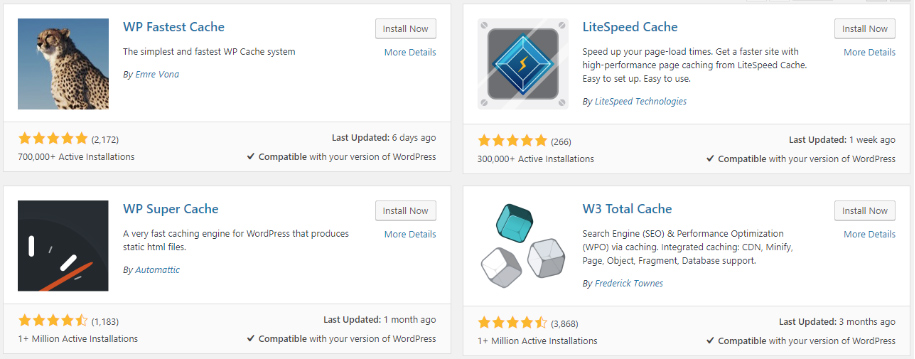
Looking into setting up a CDN like Cloudflare can also help, especially when it comes to your worldwide traffic.
The first suggestion you’ll see in most speed tools is to leverage browser caching. You can do that by editing your .htaccess file to include the following:
## EXPIRES CACHING ##
<IfModule mod_expires.c>
ExpiresActive On
ExpiresByType image/jpg "access plus 1 year"
ExpiresByType image/jpeg "access plus 1 year"
ExpiresByType image/gif "access plus 1 year"
ExpiresByType image/png "access plus 1 year"
ExpiresByType text/css "access plus 1 month"
ExpiresByType text/javascript "access plus 1 month"
ExpiresByType application/pdf "access plus 1 month"
ExpiresByType text/x-javascript "access plus 1 month"
ExpiresByType application/x-shockwave-flash "access plus 1 month"
ExpiresByType image/x-icon "access plus 1 year"
ExpiresDefault "access plus 14 days"
</IfModule>
## EXPIRES CACHING ##
2. Optimize your Images
Take a look at the file sizes of the images on your site. This is one area that can absolutely murder your load times if you aren’t careful. We see websites all the time where their images are upwards of a MB or more when they absolutely don’t have to be so large. Even if an article only has an image or two, this can add up really quickly, not to mention pages with dozens of pictures.
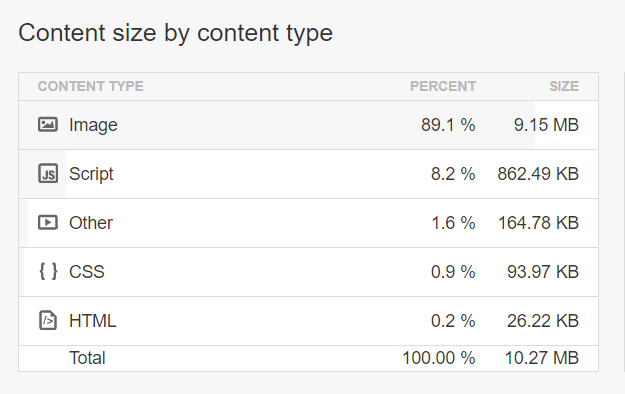
A good rule of thumb is to aim for under 100kb per image, but with very detailed images (Like a picture with many leaves or blades of grass, for instance) you may need to aim a little higher to not end up with a blurry picture.

You don’t have to go in and manually re-save each image, there are apps like Kraken.io which can help you to either upload a folder with all your images, optimize them, then re-upload the optimized versions to your server or use a WordPress plugin to take care of it all automatically.
3. Checking your Speed
When you check your page load times using tools like Pingdom, GTmetrix, and Google’s PageSpeed Insights you’ll get a score that can give you a rough idea, but more importantly you’ll get an actionable list of suggestions of things that you can improve. After making those changes, or at least some of them, you can run the tests again and see how much of a difference it made.
4. Minify CSS and JS
To minify your CSS and JavaScript essentially means to remove everything that isn’t necessary from your code without losing or changing any functionality of your site. This is often a feature you’ll find in caching plugins if you don’t want to do it manually.
Upgrade your Hosting
You don’t necessarily need a dedicated server that costs you hundreds of dollars per month just to get a decent speed, but if your website is hosted on a low-grade and overpopulated shared server, it just might be holding you back.
Even higher-end servers could be a bottleneck if your site is getting a lot of traction. Cloud VPS like the ones that Linode offers are easy to scale up or down as needed. Digital Ocean and Amazon AWS are other options for affordable unmanaged VPS.
If the idea of setting up your own servers is intimidating, ServerPilot.io makes them dead-simple to manage. These options will give you the most bang for your buck and will sometimes end up costing even less than you’re paying for cheap shared hosting.
It’s not a bad idea to reach out to your current host to see if there’s anything they can do on their end to help with speeds, too. Pay attention to the “time to first byte” metric when you perform your speed tests, this can be an indicator as to how much your host itself may be slowing you down.
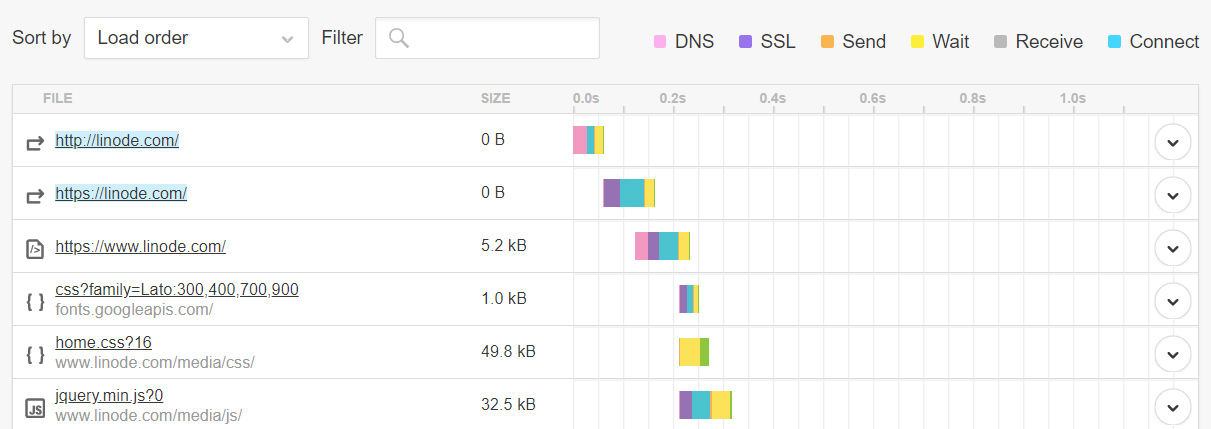
Note: If you’re running ads on your site it can cause inconsistent load time measurements. If you run the test a few times in a row, you can get significantly different results. This can be due to which ads are being loaded and how they’re handled. It’s a good practice to just turn off your ad stack altogether before testing your website speeds for the sake of consistency. Once you’ve established a baseline and done everything you can to improve it, turn the ads back on and see how things are looking.
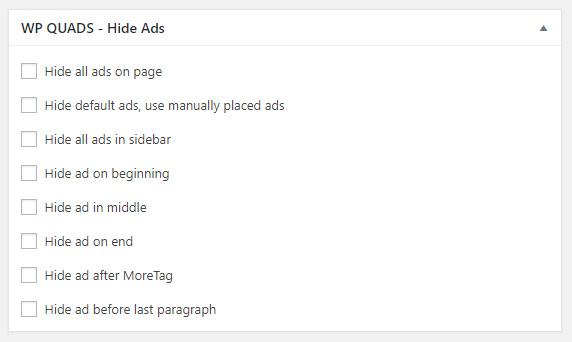
If you don’t want to turn off your ads, you can try measuring a page that doesn’t display ads, or setting up a staging server. Chances are you’re probably okay to turn off ads for a few minutes.
Slower load times is just a sacrifice you’ll have to make if you want display ads on your site like Adsense, Ezoic, and a number of other networks out there. Disabling things like video ads can help improve performance a great deal, but in some cases, it also means turning off some of the higher paying ads, so you’ll have to decide what you’re comfortable with and what price you’re willing to pay for the benefits of a faster site.
On the plus side, asynchronous ads will load after the rest of your site, so it may lead to a lower score on speed testing tools, but it isn’t having as bad of an impact on visitor experience. It’s always frustrating when you’re waiting for a site to load but only the ads are showing up at first.
Mobile Friendliness
Your niche and traffic sources will determine just how many of your visitors are mobile, and in some cases the majority of a site’s visitors could be browsing the site on their phones yet the webmaster might not have really taken them into account.

When you shop around for themes, do you ever find yourself checking how they look and perform on mobile devices? Thankfully, many modern themes do a decent job of using responsive designs, so you don’t need an entirely separate website for mobile most of the time.

You can use Google’s PageSpeed Insights tool to see how your site performs on mobile devices, and as an extra bonus it’ll also give you some insights into your overall loading times and what you can do to improve those across the board.
You need to offer a good mobile experience for your visitors, full stop.

Do you need HTTPS?
More and more people have been making the switch from HTTP to HTTPS by adding SSL to their sites. There was a time when you might not bother with this unless you had a membership site, you were taking payments, or handling other sensitive data. It could be costly and just wasn’t an expense that was necessary for smaller info sites, for instance.
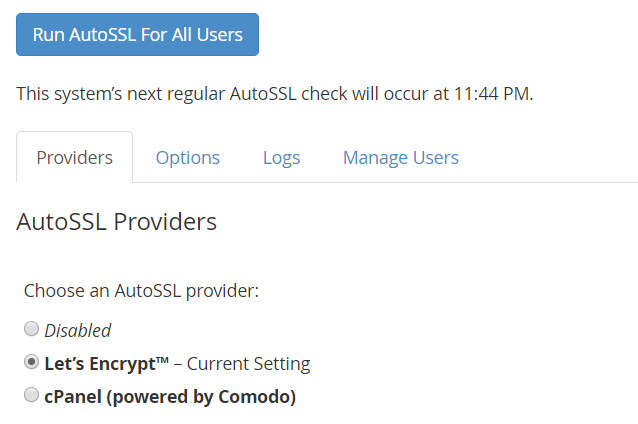
Now, however, there are services likeLet’s Encrypt and even plugins for WordPress (Like this one) that make the switch as easy as possible, and free.
If you already have an established site, this process does involve redirecting all your http URLs to the new https version, but the good news is that Google picks up on this very quickly and out of the numerous sites we’ve seen do this first hand, there have only been positive results.
This has now gone from being something that’s optional and not a bad idea, to being something you basically have to do. Google’s Chrome browser is starting to display a message for HTTP sites telling visitors that the sites are not secure. This forces your hand if you don’t want to scare away a large portion of your visitors, but it’s a good move to make anyways, so if you needed that extra little push, there it is.
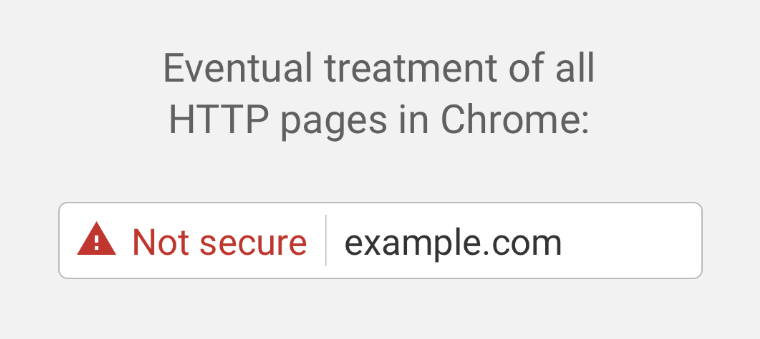
It’s tough to say exactly how much of a boost this change might give you but in the grand scheme of things it’s an easy win, and there will likely be a time when HTTP sites are aggressively shaken loose from their SERPs in favor of sites that are deemed safer to visit.
Starting Where You’re Already Strong
We see a lot of people focusing on how to attack new keywords and stressing about keywords that they aren’t even on the map for yet. This is an important part of growth, but during this audit process we also want to encourage you to fortify your existing rankings and to put some energy into the phrases that you’re already close to ranking for (and might not even realize yet.)
Your best-performing pages are already getting some love from Google, so why not build on a good thing?
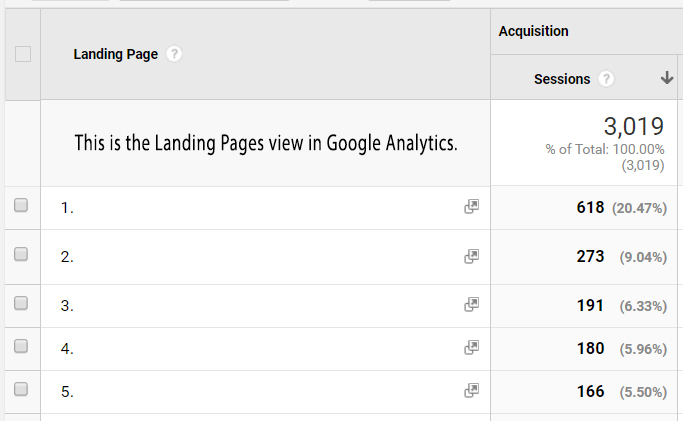
Are there related keywords you could be including that might be easy to rank for?
Are you already on the map for certain keywords that just need a little boost?
Have your competitors found something you haven’t yet?
Huge steps forward in the SERPs could be hiding right under your nose and here’s how to find them...
Finding What You’re Ranking For
If you’re using a rank tracker, you’ll likely have already loaded up your own list of keywords based on your keyword research, and you’ll know where you rank for them. But what about keywords thataren’t on your list yet?
If you enter your URL into SEMrush you can get a list of your top organic keywords. You can see ten of them without a paid membership.
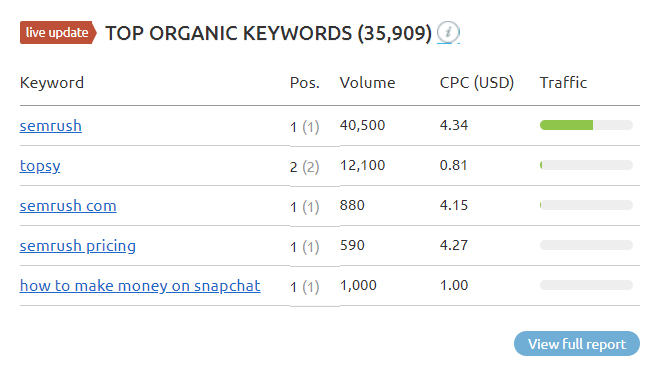
Ahrefs has a similar feature as well, and once again you can see a small selection of results without a paid membership.
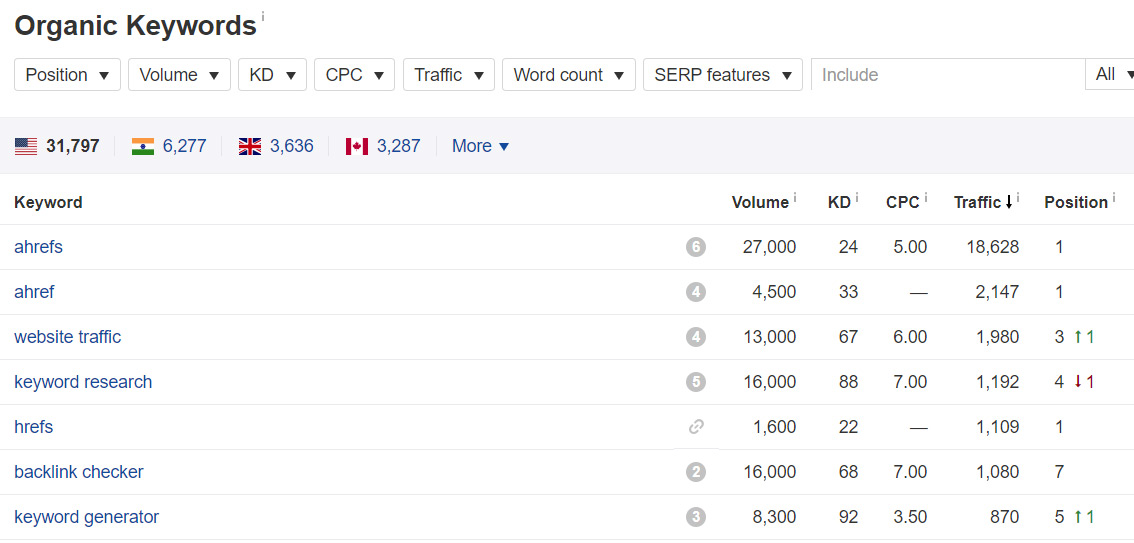
It’s helpful to see what you’re already ranking for because you may have an easier time moving up a few spots for a keyword that you’re already on the map for rather than trying to start from scratch with keywords that haven’t given you any positive movements yet.
Even from within Google’s Search Console, you can see which phrases are sending you clicks and even what your CTR is for those keywords. We’ll be talking about CTR more in a few moments.
Finding What Your Competitors Are Ranking For, Too
Continuing to look at your higher performing pages, take a look at which sites you’re competing with for those phrases in particular to further explore opportunities to strengthen your best pages.
Instead of entering your own URL into SEMrush and Ahrefs, you can enter some of your competitors.
In SERPWoo, you can use the Keyword Finder tool to do this very effectively.
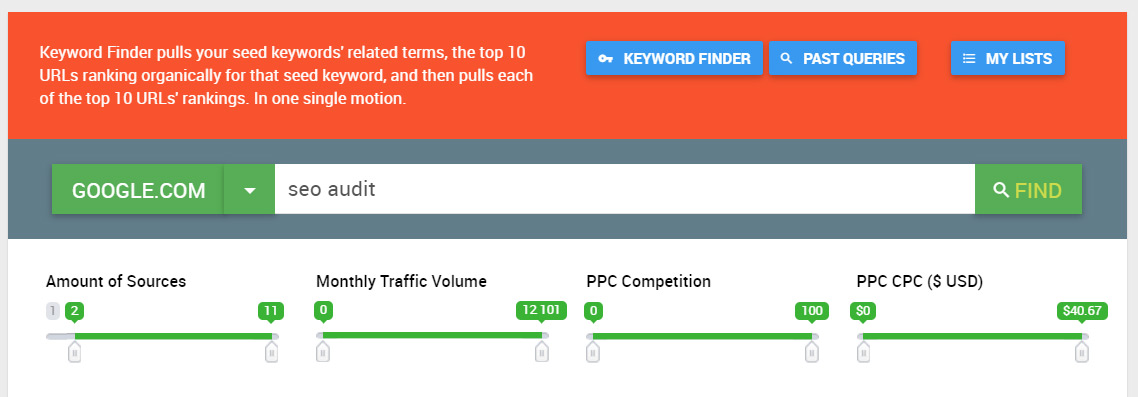
Start by taking one of your keywords and entering it into the tool.
Next, adjust the Amount of Sources slider. Starting at 2-3 will help filter out some of the noise while still casting a wide enough net. You can adjust it from there and move the minimum number of sources higher to reveal keywords that are shared among most of the top-ranking sites.
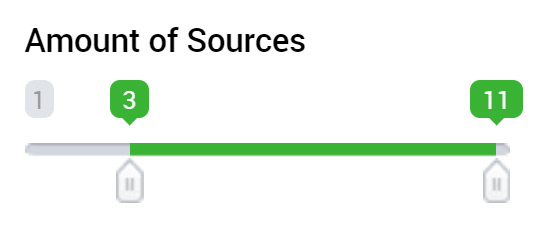
Now, you’ll have a list of keywords that also appear on multiple sites that are also ranking for your target keyword. This gives you some great insight into keywords that Google likes to see together and could highlight some great opportunities for relevantly effortless growth.
Improving Your Weak Points
After going over how to fortify and improve the areas where your site is already doing well, it’s important to put some effort into the areas where the site’s struggling. The wins here might not always be as easy, but they can be very rewarding.
We want to identify the pages on your site that just aren’t performing. Then, it’s a matter of deciding whether they’re even worth keeping around or not.
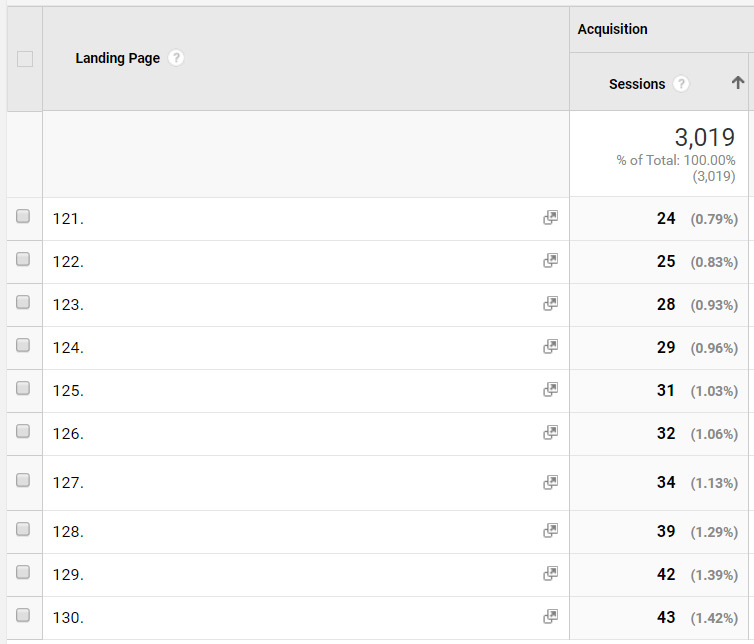
It might be worthwhile to put resources into auditing each of those pages and determining how you can optimize them, and some of them might even start to click into place based on other steps you take during the SEO audit process, but some of them might just be duds that you would rather get rid of altogether.
It could be that the quality is poor (bad information, filler content, or just poorly written, the topic isn’t all that relevant to your site, the article is all over the place and not useful to readers, etc ...) and in these cases you may be better off to just scrap it.
All of your content should have a purpose. The goal of any given post could be:
- To collect leads or make sales,
- To funnel visitors towards money pages,
- To inform and educate your readers,
- To get linked to and then to distribute that link juice to other pages on your site with interlinking,
- Many combinations of the above, and more...
If you can’t figure out why certain posts exist, and they’re also not getting a lot of (or any) traffic, it might be time to prune them. Just like pruning a plant, when you remove the dead weight it allows everything else to flourish.

First things first, do you have other articles with similar topics that you could merge the pruned articles with? In these cases, you can combine some or all the content from an underperforming page with another article on your site, delete the old page, and 301 redirect the old URL to the page you’re keeping.
In some cases, the content might just not be up to par and not worth fixing.
Note: As a rule of thumb, if the post is getting at least some sprinkle of traffic, and if it has any links pointing towards it, it’s probably better off to optimize it and see where it lands first.
This is especially true if you haven’t really optimized it for keywords and related keywords, if your on-page is lacking, and if you haven’t earned any links to it.
Any of those things on their own, not to mention a combination of them, could be the missing ingredient that ignites your ascension to that number 1 spot.
Alternatively, if you’ve optimized too aggressively for your target keywords, that could also be holding you back, in which case you may want to try dialing things back before making any major decisions on whether to move or scrap an article altogether.
On-Page Considerations
When it comes to on-page optimization, it’s important to remember that the nuances of exactly what you should be aiming for will have a ton of variables attached to them. It’ll depend on what’s working in your niche and your specific SERPs, and the goal posts will often move as time passes.

In some cases, things that used to be a bad practice or not worthwhile can come back in favor.
You’ve got to look at it from a search engine’s point of view. When people discover a certain technique or ranking factor that is working well, it’s not uncommon for the search engine to start giving it less value.
When people weren’t disproportionally abusing it, it could have been a good signal for search engines to accept but as it becomes abused, the pros are outweighed by the cons of trying to weed out manipulation.
When the ranking factor carries less weight, and is therefor not abused any longer, the search engines may start to give it more value again.
It’s helpful to think of these on-page tips as a fluid thing. You want to cover your bases as much as possible for when certain things are more in favor, but you also don’t want to overreach in ways that could end up burning you down the road.
Tip: You can use scraping tools like Screaming Frog or Xenu Link Sleuth to analyze your pages and quickly let you know how things are looking as far as your on-page is concerned. The ever-popular Yoast SEO plugin for WordPress is another way to see where you’re at, but some of their recommendations can be a little on the aggressive side so you don’t necessarily want to follow them to a T or you may end up being over-optimized.
Tips for On-Page Optimization Without Over-Optimization
Interlink strategically: Interlinking isn’t just about spreading around the link juice for search engines, it’s also creating the path that your visitors will follow. If the goal of many of your long tail articles is to get people on a money page, make sure you aren’t sending them away from that page once they get there with irrelevant interlinks just for the sake of interlinking.
The Yoast SEO plugin now has two columns that you can enable which will tell you exactly how many inbound and outbound interlinks appear on any given post on your site.
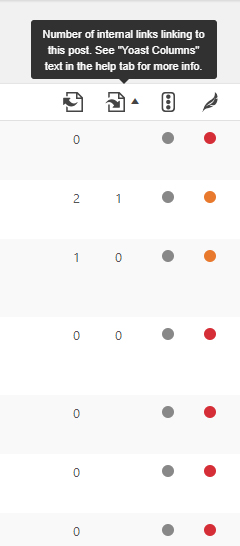
Ensuring that you don’t have orphaned pages is a good first step to take when it comes to interlinking, and if it seems like certain articles are getting interlinked to in a disproportionate quantity, you might want to consider thinning that out a bit too. Sometimes, if one article is on your mind more than others, you’ll give it too much attention while neglecting others.
Taking the occasional skim through your older content is a good way to keep things fresh, and it also gives you the opportunity to link to newer articles from your older ones to create a thicker web throughout your site. If you don’t do this, none of your older articles will be linking to newer ones that didn’t exist when the old ones were initially published.
The Freshness Factor: Certain SERPs demand content that’s up to date. This is particularly noticeable in review-type queries, but elsewhere as well. If some of your posts seem to be lagging behind or slowly dropping positions as time passes, it can be because more competitors are starting to pass you and you need more links.
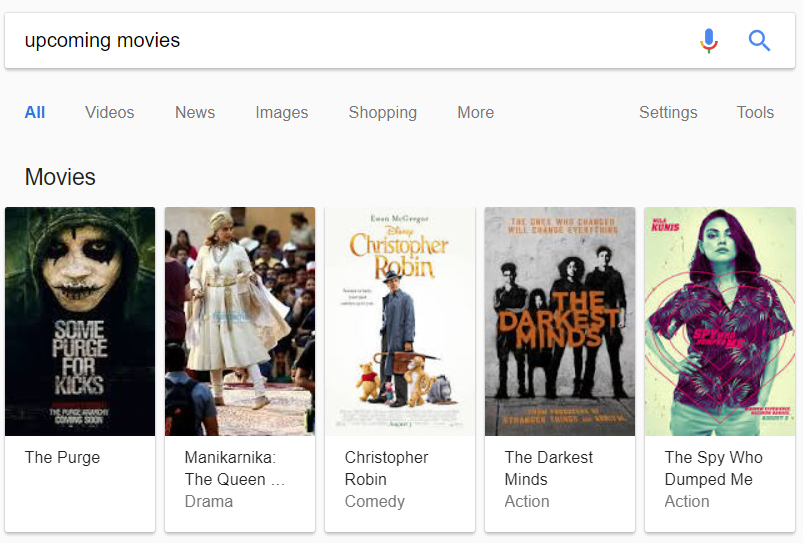
It could also be a matter of spending 20 minutes sprucing up your post, adding a few hundred words, and ensuring that any out-of-date information is removed, and any relevant new information is added.
Use your keywords in your headers: It stands to reason that at least some of your secondary keywords will be describing an entire section on your article, so make sure you’re using them in your headers.
Use your keywords in your image alt tags: In some cases, you can bring in some noticeable traffic from image search results and using a keyword in the file name and/or the alt text of your images makes it abundantly clear to crawlers what the image depicts and thus what your page is about.
Use your keyword in key areas: It’s generally considered a best-practice to try to use your main keyword somewhere in the first and last paragraphs, in a header, in your title, and perhaps in an image’s tags. Beyond that, you’ll likely want to use it sparingly throughout the body of your post, which can be difficult to get used to, but the next tip will show you how.
Don’t repeat your keywords over and over in the text: If your article is about Jalapeno peppers, it feels natural to repeat those words and over anytime you need to mention the topic of your post, but you’ll want to find other ways to refer to them. For example, instead of saying Jalapeno Peppers over and over, you can replace some of those usages with phrases like “these spicy treats”, “these popular peppers”, “this variety of chili pepper”, or “Capsicum annuum”.

The examples will vary depending on your keyword, and it’s easier to do for long tails. Just try to find other creative ways to refer to the topic at hand so that you can get your correct keyword usages in like having it appear in the title and a header or two without over-doing it in the body of the post.
Warning: Be patient after you’ve made any major changes to your content. You may initially see a dip in rankings and traffic, which makes many people nervous and causes them to make more changes, then they see another dip, and the downward spiral continues.
It’s believed that search engines will throw the occasional curve ball at webmasters who have made changes to their pages in an attempt to muddy the waters and make it harder to split-test exactly how those changes will impact your rankings.
With a bit of randomness, and the fact that it can take weeks or even longer to see changes, search engines are able to make it harder and harder to pinpoint exactly what’s causing the needle to move. Just be patient as you tinker and don’t get sucked into the psychological warfare.
Getting Your Header Game on Point
Headers are useful because they tell your visitors where they can find the information they’re looking for, especially in larger articles. If you’re hoping to attract a lot of longtail traffic with a huge post, make sure people can find what they’re looking for with a quick skim.
This ties back in with user experience which we talked about in the Page Speed section. If someone lands on your site and can easily find what they were looking for, they’re less likely to return to the SERPs and to send signals that your site isn’t meeting the mark.
When you’re at this stage of your SEO audit you’ll want to take a look over the site’s content and make sure that the paragraph headers do a good job of describing what’s below them, and also using some of your keywords in the headers when it makes sense to do so.
When your content is structed correctly, it’s easy to know when to use H2 or H3. If your article is written in a way that’s kind of all over the place, and that makes it hard to organize things with headers or to know how to nest those headers, chances are that your audience will have a tough time with it, too.
The best thing you can do is to place and format your headers with thereader as the priority, with a little bit of finesse in mind to keep the search engines happy too by not over-optimizing.
CTR Over Everything, Thoughts on Titles
Rankings are obviously crucially important and what we’re striving for with an SEO audit, but don’t neglect CTR either.

Before people have a chance to skim your headers, they’re going to be seeing the title of your article and deciding in a split second if that’s what they want to click or not.
If you have a big piece of content that covers multiple facets of a topic, it can be hard to summarize it in a title without overdoing it.
There’s a certain SEO mindset with content, especially in certain niches, where a lot of it comes off very dry. You’re writing articles for the sake of using keywords, but somewhere along the way the creativity gets lost.

This leads to dull titles with all the top search results essentially looking the same. There’s a fine line between looking at what is working based on what types of titles Google is clearly rewarding, and there also being a massive opportunity for you to stand out from the crowd.

It’s kind of a chicken and the egg type of question: Are all the top articles titled similarly because that’s what Google wants, or is it because everybody is following the trend?
Catchy titles aren’t just for social media. Your SEO titles don’t need to be boring, dry, and dull.
Let’s paint a picture where the top 4 websites all have very similar titles, and you’re sitting there at number 5 trying to emulate them. You’ve scored backlinks on some of the same sites, but they have more authority and overall stronger domains than you. One thing you can do is check what your CTR is in the Search Console and try out a more compelling title for your article.
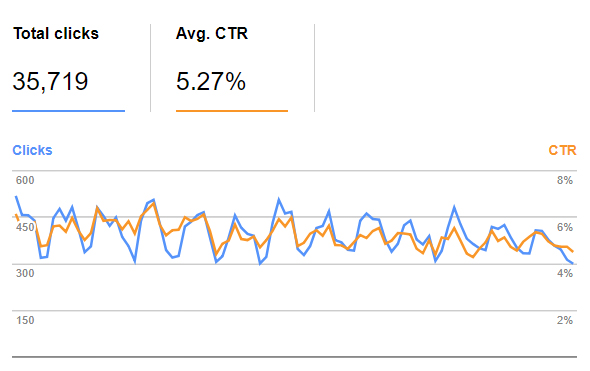
If more people start clicking your title because it’s the first breath of fresh air in that SERP, especially if you can connect to people on an emotional level in an otherwise bland list of articles, you’ll get a disproportionate amount of traffic.
Not only will more people be clicking your article because it’s more interesting, but once again this sends positive signals to Google who may decide to rank you higher. All things being equal, a better click through rate is going to make a big difference, and it can even help you to overcome other shortcomings in the SERPs.

That doesn’t mean you’ll want to go Full Clickbait. You need to deliver on whatever the title promises to the reader. If your visitors leave disappointed, you could end up doing more harm than good.
Off-Page: Who Is Linking to You and Who Should Be?
A lot of what we’ve looked at thus far has been on-page things on your domain that you have direct control over. There are also off-page factors that could be dragging you down, or opportunities you’re missing out on.
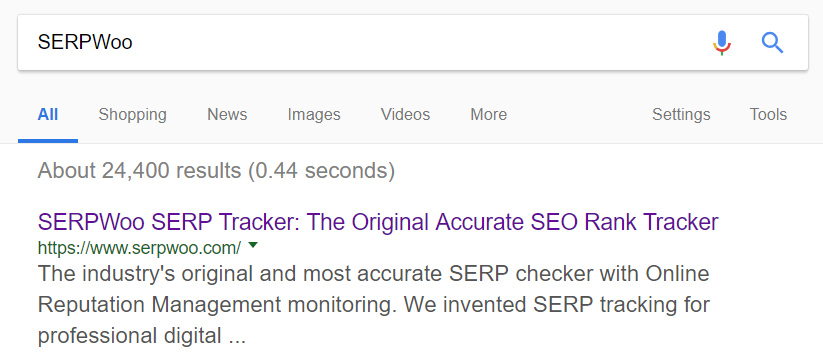
One thing you can do, depending on your brand name and how unique it is, is to run a search for your brand name and see if it’s mentioned anywhere without a link. That gives a good opportunity to reach out to the sites that are mentioning your brand already. It’s not all that uncommon for people to borrow your images, cite you as a source, but not include a link. Often, they’ll have no problem adding the link when asked nicely. Your mileage may vary.
It’s not a bad idea to keep tabs on incoming links, you can find the most recent ones using Ahrefs even without a paid plan.
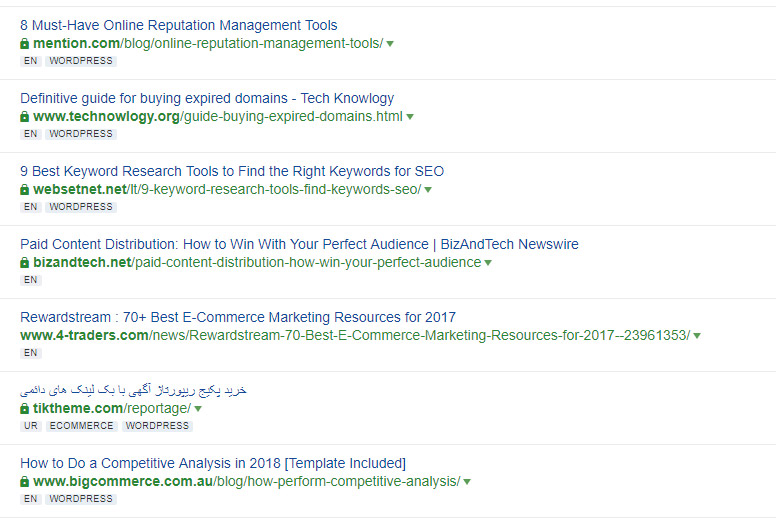
If you keep on top of it at least every few weeks, you’ll see all the new links that Ahrefs picks up for free. If you want to go back further than that, you can use their free trial or just pay for an account for that matter.
This is also helpful in building your disavow file which you can submit to Google through the Search Console.
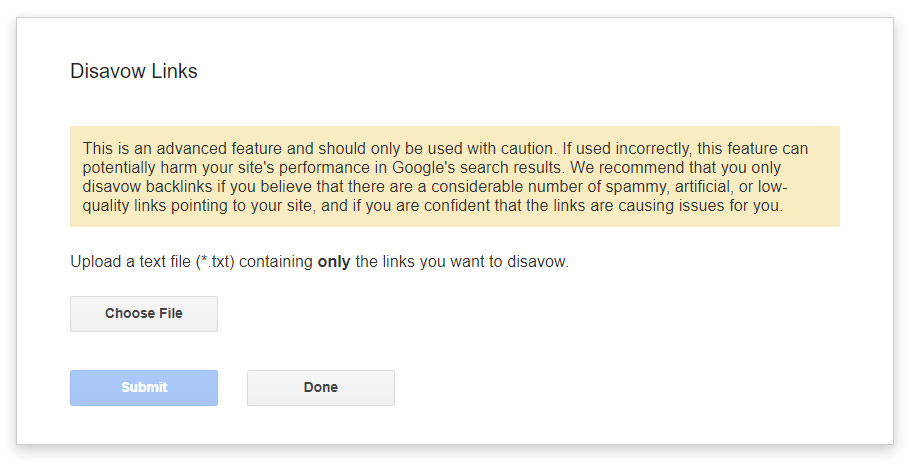
If you’ve heard of these in the past but weren’t exactly sure how to create your disavow file, you can get pretty fancy with it if you want to, but generally speaking it’s very easy to setup.
All you need to do is create a text file, call it whatever you want, and add domains or specific pages that you want to disavow the links from.
You can start it with something like this for a very basic disavow file...
#Domains disavowed. last updated on August 23rd
domain:Domain1here.com
domain:Domain2here.com
domain:Domain3here.com
#Pages disavowed. last updated on August 23rd
https://url-goes-here.com/one-per-line
https://url-goes-here3.com/one-per-line
Then just save your text file andupload it here.
Scheming Up Some Schema / Structured Data
Using on-page markup to structure your data allows search engines to better understand and categorize your content. You’ve probably seen at least a few examples of this showing up in the search results...
It’s commonly used for things like reviews...

Recipes...

News...

And a lot more. This is a big topic to dive into, so here’s some further reading to fully explore how to get this setup depending on what type of content you’re producing:
Examples, including code snippets, from Search Engine Land.
Schema.org, a collaboration between Google, Microsoft, Yahoo, and Yandex.
In conclusion...
If you follow this guide from top to bottom, we’re confident you’ll unlock some victories along the way.
If you can’t tackle every single suggestion, it’s not the end of the world. You’ll start to get more of a feel for what your competitors are doing, what’s working for them, and how you can adapt as you go through the process. If you’re in a super competitive niche, you may have to push beyond the point of what would normally be diminishing returns for the typical site, but in a lot of SERPs just covering the basics will give you a solid leg up.
This guide was created to help audit existing properties and to guide you when you’re tackling your next endeavor. You want to stay on top of where things are moving, while also keeping the door open to things that have worked in the past without painting yourself into a corner.
Grab thischecklist to download and share with employees, or print off for future use.
